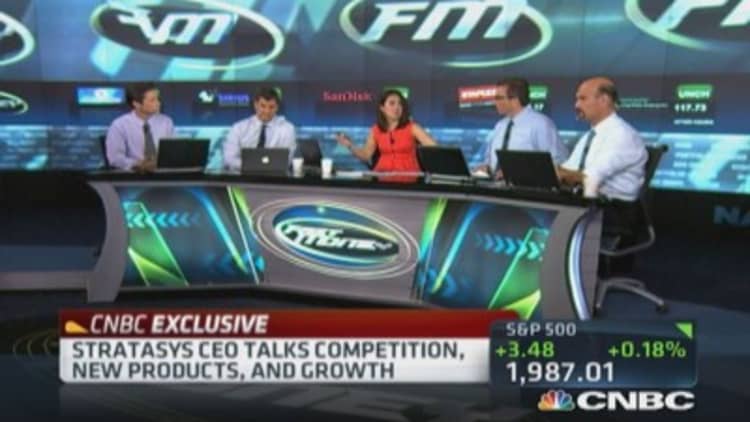From creating artificial limbs to aircraft parts, 3-D printing has been hailed as revolutionary, but investors are disagreeing with the hype and are ramping up their short positions as earnings in the sector have fallen short of expectations.
While 2013 burned short sellers of 3-D printing stocks, 2014 provided an "injection of reality", according to Markit.
Average short interest as a percentage of shares outstanding has risen to from 9.7 percent to 12.75 percent from the start of the year for the five major players, which include the New York-listed 3-D Systems and Nasdaq-listed Stratasys -- indicating that investors are already betting that stocks will fall.
Read MoreHow 3-D printing will radically change the world
"In 2013 3-D printing stocks were categorized by strong revenue growth, rising stock prices, and shorts running for the exit after experiencing agonizing losses," Markit said in a note.
"2014 provided an injection of reality. The average return of the five 3-D printing companies below was minus 29 percent while short interest levels varied from flat to surging in the case of Stratasys. Unsurprisingly, the insanely high valuations at the end of 2013 proved unsustainable."
Overhyped
A great deal of hype has surrounded 3-D printing over the past year with manufacturers in a wide variety of industries looking at ways to use the technology to drive down costs. by opening a 3-D printed products store.

The 3-D printing market including printer sales, materials and associated services, reached $2.5 billion globally in 2013, and is forecast to be worth $16.2 billion by 2018, according to research firm Canalys.
Share prices reflected the excitement last year, with 3-D Systems rallying 173 percent and Stratasys seeing a 72 percent rise. But 3-D Systems' stock has plummeted 46 percent in the year to date, while Stratasys has seen a 26 percent decline.
Read MoreWhat goes into 3D printing jet engine parts
3-D Systems' results missed market expectations on Thursday, despite reporting a 25 percent increase in second-quarter revenue, and the average short selling on its stock has increased five percentage points since last November to 19.4 percent, according to Markit. Short interest in Stratasys rose from 2.7 percent at the beginning of the year to 13.8% today.
Markit said that increasing competition from the likes of Amazon has also contributed to the negative sentiment.
'Misunderstanding' about market
Investors expected rapid results from the 3-D printing industry causing frothy valuations, one analyst said, but the benefits of the technology will take longer to materialize.
Read MoreCramer: Wall Street calls these stocks 'hideous'
"I think last year we saw stock prices of some the leading 3-D printing companies inflated beyond the level they should have been at based on hype and investors jumped on the bandwagon," Tim Shepherd, senior analyst at Canalys, told CNBC in a phone interview.
"But this is a market where there is a lot of misunderstanding. The reality it is that it has huge potential to make a transformation to the way products are made and designed but those will take a while to kick in."


